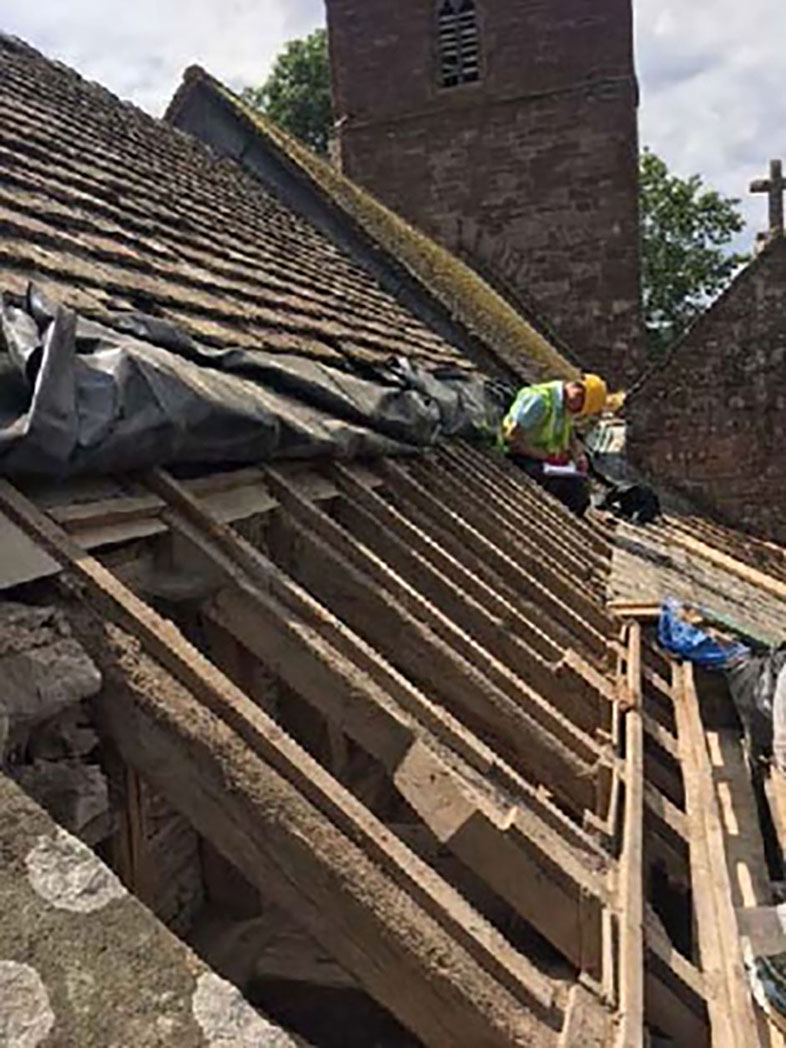
damaged panelling
A survey carried out by Swift Ecology in September 2018 identified three species of bat: brown long-eared (Plecotus auritus), common pipistrelle (Pipistrellus pipistrellus) and lesser horseshoe (Rhinolophus hipposideros), but of these, the brown long-eared bats were the only ones with a roost in the chancel roof, which were liable to be disturbed by the work. Earlier surveys had found no bats present in the Walker organ in the chancel, so there would be no interruption of the work on either the organ or the decorated plaster.
In order to carry on the work a Bat Mitigation Licence had to be acquired. This licence is valid for five years ending 13th December 2023. Work on the church is only permitted during two periods in a year: after hibernation, in March and April, and after breeding and maternity, in October and November. Work on the J W Walker organ, which is currently dismantled, can be carried on off-site so that once work on the chancel is finished, the organ can be rebuilt. This was orignially planned to be completed by the end of 2019, which was be the instrument's 150th anniversary, it having been originally built in 1869. First, structural complications discovered during the early phases of the work, and then Covid 19, set back the programme considerably.
As space behind the decorated plaster was revealed, it became apparent that the whole chancel roof would need to be restored, with up to 70% of the stone tiles and one of the rafters needing to be replaced.

inspecting damage to the roof
On the east wall the painting of the genealogical tree from Adam to Abraham has also been restored but the text around the window arch is hard to decipher! The conservators understand the east wall paintings to be of a later date of around 1867 and that the earlier painted roof timbers were added with golden stars by Seddon.